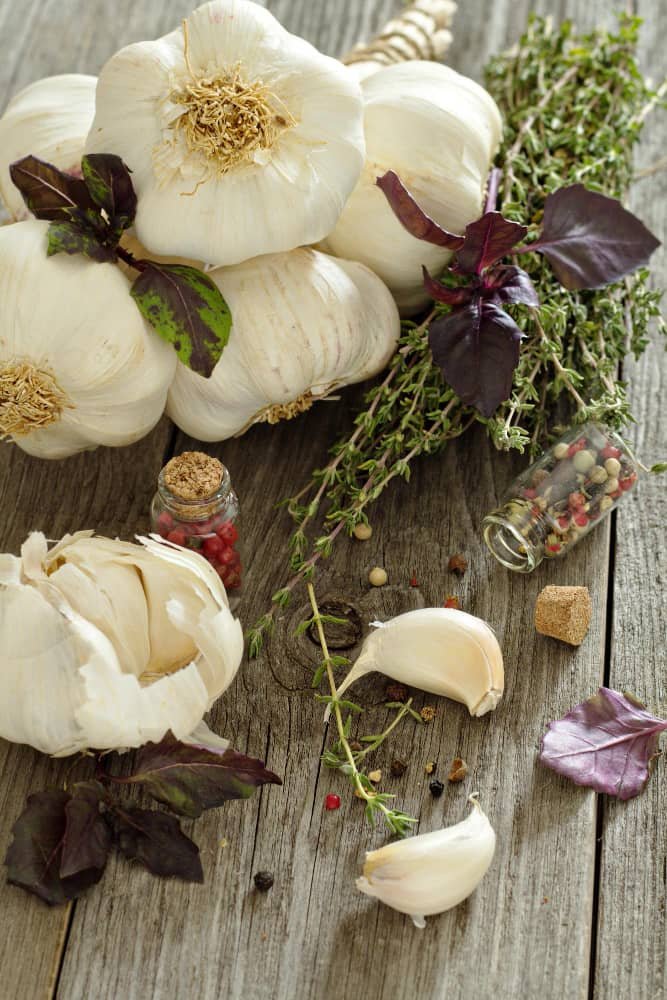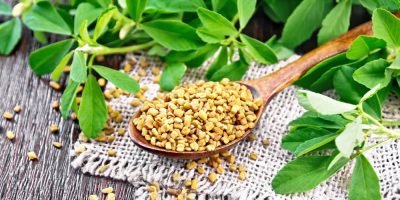
Thyme is a small, yet powerful herb known for its distinct aroma and flavorful taste. This versatile herb has been used in culinary and medicinal practices across various cultures for centuries. Native to the Mediterranean region, thyme belongs to the mint family and boasts an impressive array of health benefits.
Not only does thyme offer numerous health benefits when consumed internally but it also possesses antimicrobial properties that can aid in fighting off infections.

Uses and Health Benefits of Thyme
Thyme is a popular herb that is widely used in cooking for its aroma and flavor. However, this versatile herb offers more than just culinary benefits. Thyme contains essential oils such as thymol, which possess powerful antimicrobial properties.
This means that thyme can help fight against various bacteria and fungi, making it an effective natural remedy for respiratory infections and skin conditions like acne.
Additionally, thyme has been found to have antioxidant properties due to the presence of compounds like rosmarinic acid. These help protect the body’s cells from damage caused by free radicals, reducing the risk of chronic diseases such as heart disease and certain types of cancer. Furthermore, due to its carminative properties, thyme has been traditionally used to soothe digestive issues like bloating and indigestion.
Thyme is a flavorful addition to meals and provides numerous health benefits. From fighting microbial infections and promoting clear skin to protecting against oxidative stress and aiding digestion, this humble herb packs a powerful punch to support overall well-being.
How to Grow Thyme in Your Garden
Thyme is a versatile herb that can add both flavor and beauty to your garden. With its small, fragrant leaves and delicate flowers, thyme is a popular choice for herb gardens or as an attractive ground cover. This perennial plant is easy to grow and requires minimal maintenance, making it suitable for beginner gardeners.
To successfully grow thyme in your garden, select the right location. Thyme thrives in full sun, so choose a spot that receives at least six hours of direct sunlight daily. It also prefers well-draining soil with a pH level between 6.0 and 8.0.
When planting thyme, you have two options: sowing seeds or transplanting seedlings. If starting from seeds, sow them directly into the soil after the last frost date for your region. On the other hand, transplant seedlings purchased from a nursery or garden center into your prepared garden bed.
Proper watering is crucial for thyme plants’ overall health and growth. While they are drought-tolerant once established, young plants require regular watering until their roots develop fully. Water deeply but infrequently to encourage deep root growth rather than shallow surface roots.
Thanks to its delightful aroma and culinary uses, growing thyme in your garden can be a rewarding experience.

Different Types of Thyme
Thyme is a popular herb from the mint family and has been used in culinary and medicinal applications for centuries. It is known for its aromatic leaves, often used as a seasoning in various dishes. Thyme is native to the Mediterranean but can now grow in different parts of the world.
When it comes to thyme, there are several different types available, each with its own unique characteristics and uses. One common type of thyme is English thyme (Thymus vulgaris), which is widely used in cooking due to its strong flavor. It pairs well with meats, vegetables, soups, and stews.
Another type of thyme worth mentioning is lemon thyme (Thymus citriodorus). As the name suggests, this variety has a citrusy flavor and aroma, adding a refreshing twist to dishes. Lemon thyme works particularly well in fish or chicken recipes and can be infused into oils or vinegar for added zing.
Lastly, there’s also creeping thyme (Thymus serpyllum), which has a low-growing habit and spreads quickly. This type of thyme is often grown as ground cover or used in rock gardens due to its ability to fill spaces between stones effectively.
In conclusion, understanding the different types of thyme allows you to experiment with flavors and find the perfect match for your culinary creations or gardening needs.
Nutritional Value of Thyme
Thyme is a popular herb used in culinary dishes and holds significant medicinal properties. Apart from its delightful aroma and taste, thyme offers various health benefits due to its impressive nutritional profile. It is rich in essential vitamins such as vitamin A, vitamin C, and vitamin K. Vitamin A promotes healthy skin, vision, and immune function; vitamin C acts as an antioxidant that boosts the immune system, while vitamin K plays a vital role in blood clotting.
Moreover, thyme contains minerals like iron, calcium, and manganese. Iron aids in producing red blood cells and supports oxygen transport throughout the body. Calcium is crucial for maintaining strong bones and teeth while supporting muscle function. Additionally, manganese contributes to bone health and helps regulate metabolism.
Furthermore, thyme possesses antioxidants like rosmarinic acid that protect against cell damage caused by free radicals. Its antimicrobial properties make it effective against various bacteria strains while aiding digestion by stimulating the production of digestive enzymes. Incorporating thyme into your diet can provide numerous health benefits due to its exceptional nutritional value.

Cooking with Thyme: Recipes and Tips
Thyme is a versatile herb that adds a unique flavor and aroma to various dishes. With its earthy, slightly minty taste, thyme is commonly used in Mediterranean and French cuisines. This herb pairs well with meats like chicken, lamb, and beef and vegetables such as potatoes, tomatoes, and zucchini.
There are countless recipes to explore when it comes to cooking with thyme. One classic dish is roasted chicken with thyme and lemon. Combining thyme’s herbal notes with the tanginess of lemon creates a mouthwatering flavor profile that elevates the humble chicken into something extraordinary. Another popular recipe is tomato sauce infused with thyme. The herb adds depth and complexity to the sauce while complementing the natural sweetness of tomatoes.
In addition to recipes, there are also useful tips for working with thyme in the kitchen. For instance, it’s important to remember that the flavor of fresh thyme leaves can be quite potent compared to dried ones.
So when using fresh thyme in a recipe that calls for dried thyme, you may need to adjust the quantity accordingly. Another handy tip is to strip the leaves from their stems by running your fingers along them in the opposite direction they naturally grow; this makes it easier to incorporate them into your dishes seamlessly.
Overall, cooking with thyme opens up a world of culinary possibilities.
Creative Ways to Use Thyme
Thyme is a versatile herb that is commonly used in cooking and gardening. Its distinct aroma and flavor make it popular for seasoning dishes such as roasted meats, soups, and sauces. However, thyme can also be used creatively beyond the kitchen.
One creative way to use thyme is in homemade beauty products. Thyme-infused oils can create natural skincare products such as face serums, body oils, and bath bombs. The antibacterial properties of thyme make it an excellent ingredient for combating acne or soothing irritated skin.
Another unique way to use thyme is by incorporating it into home decor. Dried thyme bundles can be turned into fragrant wreaths or garlands that add a touch of nature to any space. Additionally, placing fresh sprigs of thyme in vases or jars makes for an attractive centerpiece that not only looks beautiful but also fills the room with its wonderful scent.
Overall, thyme goes beyond being just a culinary herb; it has many creative uses that extend into beauty and home decor. Its versatility makes it a valuable addition to any kitchen pantry or garden alike.
Possible Side Effects of Consuming Too Much Thyme
Thyme is a popular herb known for its culinary uses and medicinal properties. It is widely used in various cuisines worldwide, adding a unique flavor and aroma to dishes. Additionally, thyme has been used for centuries in traditional medicine to treat a range of ailments due to its antibacterial, antifungal, and antioxidant properties. However, like any other herb or spice, consuming too much thyme can have potential side effects.
One possible side effect of consuming excessive amounts of thyme is digestive issues. Thyme contains compounds that can stimulate gastric acid production, which may lead to heartburn or an upset stomach in sensitive individuals. Furthermore, some people may experience allergic reactions after consuming large quantities of thyme, especially if they are prone to allergies or have existing respiratory conditions such as asthma.
Another potential side effect of overconsumption is increased blood clotting time. Thyme contains certain chemical compounds that possess anticoagulant properties. While this can benefit individuals with certain medical conditions who need thinner blood or reduced clotting ability, excessive consumption could lead to prolonged bleeding in others and potentially interfere with prescription medications that affect blood clotting.
Therefore, it’s important to exercise moderation when using thyme as a culinary ingredient or herbal remedy to avoid these potential side effects.
Conclusion
Thyme is an incredibly versatile herb with numerous health benefits and culinary uses. Its rich aroma and distinct flavor make it a popular choice in various cuisines worldwide. Additionally, thyme contains powerful antioxidants that can help boost the immune system and protect against chronic diseases.
Furthermore, traditional medicine has used thyme for centuries to treat various ailments such as coughs, sore throats, and digestive issues. Its antibacterial properties make it an effective natural remedy for fighting infections. Moreover, thyme essential oil is commonly used in aromatherapy to promote relaxation and reduce stress.
In conclusion, incorporating thyme into your diet or daily routine can provide various health benefits. Whether you’re using it as a seasoning in your favorite dishes or enjoying its aromatic qualities through essential oils or herbal teas, this herb will surely enhance your overall well-being and culinary experiences.















